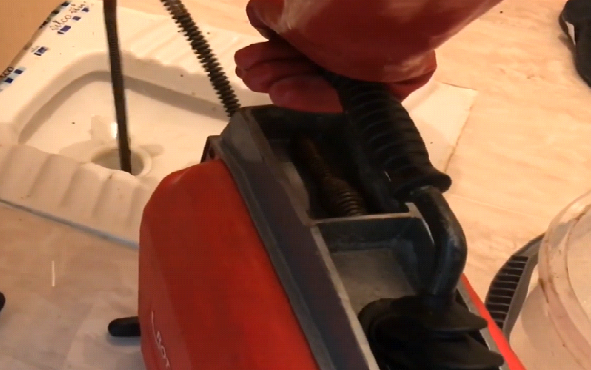When it comes to designing a bedroom, most people focus on the larger furniture pieces — the bed, the wardrobe, maybe even a dresser. But the side table (also known as a nightstand or end table) plays a crucial supporting role. It's the piece that holds your reading lamp, keeps your nighttime essentials within reach, and often completes the aesthetic of your sleeping space. However, selecting the right side table is about more than just filling a corner or matching your bedframe. It involves a thoughtful balance of style, function, proportion, and even price.
Choosing a side table for your bedroom should start with identifying your specific needs: Are you looking for a surface to place a lamp and your phone? Do you need drawers for additional storage? Or are you working with limited space in a small room or studio apartment? Understanding your goals will help narrow down the options significantly. Once you have a clear picture of your needs, it’s also smart to familiarize yourself with the average End & Side Tables price in United States, so you’re not caught off guard by pricing that can vary depending on size, material, or brand.
Functional Needs First: Storage, Surface Area, and More
Before getting caught up in looks and finishes, think about how you’ll use your side table. Will it primarily serve as a lamp stand? Do you need drawers to hold books, eyeglasses, or charging cords? If you're a minimalist, a simple surface might be enough, but if you're someone who likes to keep nighttime essentials close, a table with drawers or shelves might be a better fit.
Some people even opt for multi-functional pieces like a small cabinet that doubles as a side table, especially in bedrooms where storage is limited. Others go ultra-slim with a tray-style table for compact rooms. Your needs should determine your design, not the other way around.
Size Matters: Height, Width, and Depth
One of the most overlooked aspects of selecting a bedroom side table is size. The wrong height can make your table uncomfortable to use, while the wrong width might overwhelm the room or not fill the space effectively. Ideally, the height of your side table should be within 2-3 inches of the top of your mattress. This makes it easy to reach items while lying in bed and maintains visual harmony.
Depth and width are also important — especially if you have a queen or king-sized bed. Too-small tables can look out of proportion, while overly large ones can make a room feel cramped. Make sure you measure your space and bed height before making a decision. This ensures the table doesn’t just look good but fits practically into your bedroom setup.
Style and Aesthetic: Blending or Standing Out
Side tables are available in every style you can imagine — from mid-century modern and farmhouse chic to sleek contemporary and ornate vintage. The right style depends on your bedroom’s existing décor. A cohesive look usually works best, but sometimes a bold contrast can make a design pop.
For example, a minimalist metal side table can look striking against a plush upholstered headboard. On the other hand, a rustic wood table with distressed finish might add warmth to an otherwise modern space. Consider if you want your side tables to blend in with your furniture or stand out as accent pieces.
Materials also play a huge role here: wood offers warmth and texture, metal can bring an industrial or modern feel, and glass creates an airy, open look. Don't forget to match hardware — drawer pulls or table legs — with your room's finishes to keep things coordinated.
Storage Features: Drawers, Shelves, and Hidden Compartments
Depending on how much clutter you accumulate bedside, you may benefit from added storage. Some side tables come with one or two drawers, while others include open shelving or even hidden compartments for valuables.
Think about your nighttime routine: Do you like to read? Keep a stack of books close by. Do you charge your phone or use a white noise machine? Look for tables with built-in cable management or open shelf space. If you value a clean look, drawers will help hide clutter and keep the surface tidy.
Some modern tables even come with USB ports or wireless charging pads built in — ideal for tech-savvy buyers who want to eliminate cable chaos. These smart features are especially handy if you’re working with a tight space and don’t want a separate charging station.
Matching Pairs or Asymmetrical Style?
Another common question is whether both sides of the bed need matching tables. The answer is: not necessarily. While symmetry offers a classic, balanced look, modern design trends often favor mixing things up. If one partner prefers storage and the other values minimalism, it’s perfectly acceptable to use different tables on each side of the bed — just try to keep the heights similar for visual cohesion.
Mismatched side tables work well when they share at least one design element, such as color, material, or shape. It’s a great opportunity to add personality and character to your bedroom while still maintaining harmony.
Budgeting Smartly
Side tables can range from under $50 to over $500, depending on size, material, and brand. Keep in mind that you're not just paying for a surface — you're investing in functionality, design, and sometimes even craftsmanship. If you're budget-conscious, there are plenty of affordable options available that still look great and perform well.
Before buying, research the typical End & Side Tables prices in United States to determine what fits within your budget range. Don’t forget to factor in taxes and delivery fees when shopping online.
FAQs About Bedroom Side Tables
Q1: What’s the ideal height for a bedroom side table?
A: Ideally, your side table should be about the same height as the top of your mattress. If it’s a couple inches higher or lower, that’s usually fine. This makes it easier to access items while lying down.
Q2: Do I need drawers in my side table?
A: It depends on your storage needs. If you like to keep things like books, glasses, or remotes out of sight, drawers are very useful. For minimalists or those with other storage options, a simple surface may suffice.
Q3: Can I use mismatched side tables in my bedroom?
A: Yes! Mismatched side tables can add charm and uniqueness to your bedroom. Just make sure they have similar height and share a common element like color or style to keep things balanced.
Q4: What material is best for a side table in the bedroom?
A: Wood is the most popular because of its warmth and versatility, but metal and glass can create a sleek or modern vibe. Choose based on your room’s overall aesthetic and practical needs.
Q5: Is it better to buy a set or individual tables?
A: Buying a set can save money and ensure symmetry, but purchasing individual pieces offers more flexibility in style and function.
Conclusion
Choosing the right side table for your bedroom involves more than just selecting something that fits the space. It’s about understanding your personal needs, the design of your room, and how your furniture functions together as a whole. Whether you're after a sleek modern look, a rustic vibe, or something with hidden storage, there's a perfect piece out there waiting to complete your bedroom.
And if you're shopping for the best deals, My Signature Home Furniture is one of the best places for the lowest End & Side Tables prices in United States. Their wide selection offers something for every style and budget — making it easy to turn your vision into reality while keeping your costs low.







